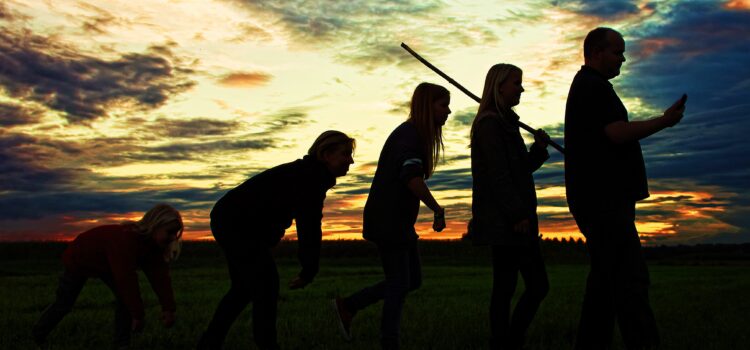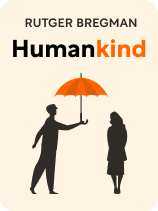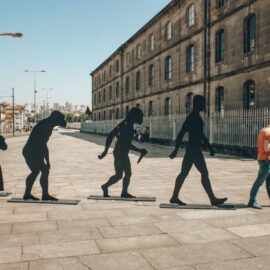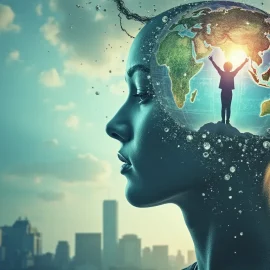

This article is an excerpt from the Shortform book guide to "Humankind" by Rutger Bregman. Shortform has the world's best summaries and analyses of books you should be reading.
Like this article? Sign up for a free trial here .
What is social learning? How does the ability to learn through imitation help Homo sapiens endure?
Social learning is learning through imitation. According to Rutger Bregman, the author of Humankind, humans’ capacity for social learning was instrumental in the survival of our species. He argues that social learning is the key factor that made Homo sapiens survive and Neanderthals (who were bigger and stronger) die out.
Keep reading to learn about the role of social learning in human survival.
Humans Have Survived by Cooperating and Learning
What is social learning? Social learning is our ability to gain skills and knowledge from those around us through observation and imitation.
According to Bregman, social learning allowed humans to survive because it made us smarter as a species. Evidence suggests that individually, our early human ancestors weren’t as smart or as strong as other species, such as the Neanderthals (Homo neanderthalensis)—another species of early humans that died out about 40,000 years ago. Bregman notes that Neanderthals had bigger brains and a stronger build than our species (Homo sapiens).
If, as Bregman claims, Neanderthals were stronger and smarter, then why did they go extinct while Homo sapiens survived? Bregman explains that social learning allowed early humans to accumulate knowledge and technology—such as tools—more efficiently than other species. Individual Neanderthals and other animals may have been smarter and stronger than individual Homo sapiens. But we were master imitators: Once one Homo sapien developed a tool, she could share it with more connections than Neanderthals could, creating a larger web of knowledge. This ability to share knowledge made our collective species more technologically advanced than the Neanderthals.
In addition to providing a technological advantage, humans’ knack for social learning also helped us survive a changing climate. According to Bregman, one theory suggests that Neanderthals died out because they couldn’t adapt to extreme swings in temperature. On the other hand, humans were able to work together to adapt and survive.
Bregman explains that as humans evolved, we became biologically hardwired to learn from each other. Studies of human skulls suggest that over hundreds of thousands of years, our ancestors’ faces became less threatening and easier to read. Unique among primates, we developed white parts of our eyes, which allowed us to track each others’ gazes. We have less severe and more expressive brows than other species. These physical changes made it easier for us to read each other’s expressions, develop trust, and share knowledge through nonverbal communication.
| The Applications of Social Learning in the Business World Bregman uses the term “social learning” in a scientific context. However, the term is also common in the business world, where an increasing number of companies use “social learning” training programs. Drawing on humans’ innate capacity to learn through imitation, these programs emphasize experiential learning and communication. They use online chat platforms where colleagues can ask and answer questions, thereby gaining knowledge together. Proponents of using social learning in the business world say that it saves time because employees don’t have to consult their managers when they encounter small, easily solved problems. However, others worry that social learning can spread misinformation and harmful ideas. |
| The Benefits of Friendlier Faces Bregman suggests that having more expressive eyebrows and whites in our eyes allows us to share knowledge and read each others’ expressions. However, he doesn’t go into detail on what types of knowledge it allowed us to share. Here’s more information on how humans have used our eyes and eyebrows to convey emotion throughout history. Researchers suggest that when we were still foragers, having whites in our eyes was useful for nonverbal communication in hunting—a hunter could use a quick glance and flash of white to show where the prey was, allowing humans to be more stealthy and quiet. Being able to track gazes also helps us determine when someone is lying: While there’s some debate about the extent to which this is true, studies have found that people tend to stare more when they tell a lie. Our eyebrows, which Bregman notes are more expressive than those of other species, also play a crucial role in showing and reading emotion. Research suggests that certain eyebrow movements are universally recognizable across different cultures. These movements include quickly raising the eyebrows to show friendliness and angling the brows downward to express anger. Evolutionarily, these universal eyebrow movements would have allowed early human foragers to communicate across different tribes and figure out whether or not to trust each other. |

———End of Preview———
Like what you just read? Read the rest of the world's best book summary and analysis of Rutger Bregman's "Humankind" at Shortform .
Here's what you'll find in our full Humankind summary :
- Why humans are fundamentally good, not evil
- How the Stanford Prison Experiment was misleading
- How recent studies have debunked "Killer Ape Theory"





